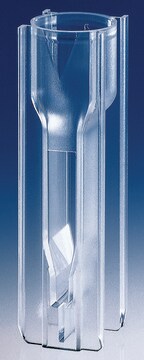A2074
Monoclonal Anti-Rabbit Immunoglobulins–Peroxidase antibody produced in mouse
clone RG-16, purified immunoglobulin, lyophilized powder
Synonym(s):
Monoclonal Anti-Rabbit Immunoglobulins (IgG, IgA, IgM)
About This Item
Recommended Products
biological source
mouse
Quality Level
conjugate
peroxidase conjugate
antibody form
purified immunoglobulin
antibody product type
secondary antibodies
clone
RG-16, monoclonal
form
lyophilized powder
species reactivity
rabbit
should not react with
pig, chicken, bovine, horse, human, guinea pig, turkey, rat, canine, goat, feline, sheep
packaging
vial of 0.5 mL
technique(s)
direct ELISA: 1:30,000
immunohistochemistry (formalin-fixed, paraffin-embedded sections): 1:100 using human tissue
western blot (chemiluminescent): 1:160,000
isotype
IgG1
storage temp.
2-8°C
target post-translational modification
unmodified
Looking for similar products? Visit Product Comparison Guide
Related Categories
General description
Specificity
Application
- western blotting
- immunoblotting
- immunoprecipitation
- enzyme linked immunosorbent assay (ELISA)
- immunohistochemistry
Physical form
Preparation Note
Disclaimer
Not finding the right product?
Try our Product Selector Tool.
Signal Word
Warning
Hazard Statements
Precautionary Statements
Hazard Classifications
Skin Sens. 1
Storage Class Code
11 - Combustible Solids
WGK
WGK 2
Personal Protective Equipment
Certificates of Analysis (COA)
Search for Certificates of Analysis (COA) by entering the products Lot/Batch Number. Lot and Batch Numbers can be found on a product’s label following the words ‘Lot’ or ‘Batch’.
Already Own This Product?
Find documentation for the products that you have recently purchased in the Document Library.
Our team of scientists has experience in all areas of research including Life Science, Material Science, Chemical Synthesis, Chromatography, Analytical and many others.
Contact Technical Service








